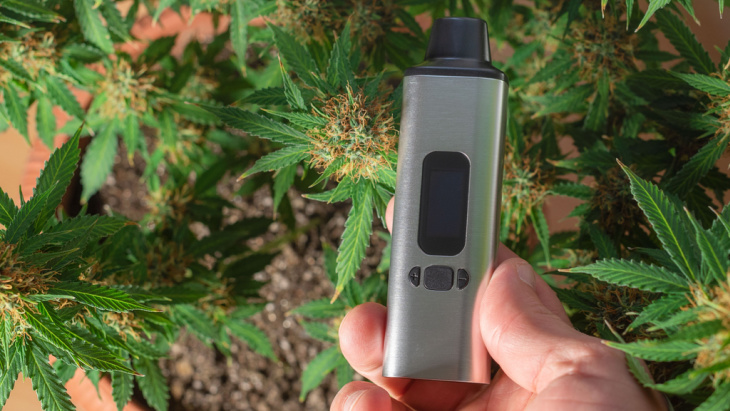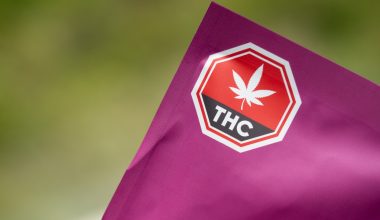
The inhalation of cannabis flower containing THC and CBD provides superior migraine relief compared to a placebo, according to clinical trial data presented at the annual meeting of the American Headache Society.
“This is the first placebo-controlled study in this space. It’s the first real — to me — compelling evidence for the anti-migraine effects of cannabis in humans,” the study’s lead researcher said.
Investigators affiliated with the University of California at San Diego presented the findings. They had previously documented their results in a 2024 preprint paper, concluding, “Vaporized 6% THC+11% CBD cannabis flower was superior to placebo for [migraine] pain relief, pain freedom, and MBS [most bothersome symptom] freedom at 2 hours as well as 24-hour sustained pain freedom and sustained MBS freedom and 48-hour sustained MBS freedom.”
THC/CBD cannabis was also superior to placebo at relieving migraine-related photophobia (light sensitivity) and phonophobia (sound sensitivity).
No serious adverse events were reported.
“Nearly one-third of migraine sufferers have tried cannabis for symptom management, and patients consistently report that it significantly reduces their pain severity and migraine frequency,” NORML’s Deputy Director Paul Armentano said. “These data further affirm patients’ testimonials.”
Survey data indicates that migraine sufferers frequently consume cannabis preparations to mitigate their symptoms and reduce their use of prescription drugs. A 2002 literature review of nine studies involving 5,600 subjects concluded: “Medical marijuana has a significant clinical response by reducing the length and frequency of migraines. … Due to its effectiveness and convenience, medical marijuana therapy may be helpful for patients suffering from migraines.”
Additional information on the use of cannabis for migraines is available from NORML’s publication Clinical Applications for Cannabis and Cannabinoids.
Related
Medical Disclaimer:
The information provided in these blog posts is intended for general informational and educational purposes only. It is not a substitute for professional medical advice, diagnosis, or treatment. Always seek the advice of your physician or other qualified healthcare provider with any questions you may have regarding a medical condition. The use of any information provided in these blog posts is solely at your own risk. The authors and the website do not recommend or endorse any specific products, treatments, or procedures mentioned. Reliance on any information in these blog posts is solely at your own discretion.






